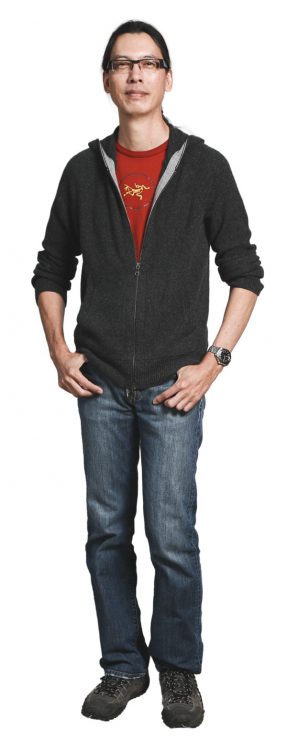 TOM BUREAU SPECIALIZES IN DETECTIVESTYLE PLANT GENOMICS: he examines the little-understood elements in between genes called non-coding DNA and also meticulously documents plant growth to find defects caused by the suppression of a single gene. The latter task got a big boost last December when a Canada Foundation for Innovation (CFI) award brought a shiny new machine to Bureau’s greenhouse lab. The only one of its kind in an academic institution in Canada, the cutting-edge device is called the McGill Plant Phenomics Platform (MP3) and promises to be a powerhouse for plant genomics research.
TOM BUREAU SPECIALIZES IN DETECTIVESTYLE PLANT GENOMICS: he examines the little-understood elements in between genes called non-coding DNA and also meticulously documents plant growth to find defects caused by the suppression of a single gene. The latter task got a big boost last December when a Canada Foundation for Innovation (CFI) award brought a shiny new machine to Bureau’s greenhouse lab. The only one of its kind in an academic institution in Canada, the cutting-edge device is called the McGill Plant Phenomics Platform (MP3) and promises to be a powerhouse for plant genomics research.
By Victoria Leenders-Cheng
::::::::::::::::::::::::::::::::::::::::::::::::::::::::::::::::::::::::::::::::::::::
You compare aspects of your work to that of using facial recognition software to find one individual in a large crowd. How so?
::::::::::::::::::::::::::::::::::::::::::::::::::::::::::::::::::::::::::::::::::::::
The traditional molecular genetics approach to finding out what a gene might be doing is to perturb the genome — for instance, cause mutations — and then ask what is different about the organism. We’re taking a similar approach in the plants we work on, looking at choice targets that we think might be important agriculturally, knocking them out and asking what they do.
We are looking for that one defect that tells us something about the gene.
::::::::::::::::::::::::::::::::::::::::::::::::::::::::::::::::::::::::::::::::::::::
This new machine in your lab, the McGill Plant Phenomics Platform (MP3), looks like a high-tech conveyor belt! It ships plants in and out of the greenhouse and photographs them at various stages of development. What makes this device so important for your work?
::::::::::::::::::::::::::::::::::::::::::::::::::::::::::::::::::::::::::::::::::::::
We need to capture the plant from a seed all the way to maturity because the defect might reveal itself somewhere along those lines, and to do this in a statistically robust manner, we need to analyze large numbers of plants. The imaging platform is designed for high throughput image capture and analysis. It has a rotating stage so the camera can capture metrics like leaf area or branch length in three dimensions and it has infrared, near-infrared and ultraviolet cameras that can look, for example, at the plant’s photosynthetic capacity or water movement to try to decipher non-invasively what has been affected by the knocked-out mutation.
To give you an idea of how powerful this device is, our plan B if we didn’t have this platform was to do what everybody else does — manual inspection of each plant. Our throughput would have been significantly lower and we would have had to select the targets we were interested in very stringently.
::::::::::::::::::::::::::::::::::::::::::::::::::::::::::::::::::::::::::::::::::::::
Your research looks specifically at parts of the genome called non-coding DNA. Can you explain what these are?
::::::::::::::::::::::::::::::::::::::::::::::::::::::::::::::::::::::::::::::::::::::
Genes only make up a small percentage of the genome; the rest is stuff in between the genes that we refer to as non-coding DNA heavily populated by transposable elements.
At first, we didn’t think these elements had any function for the host and, in fact, we sometimes refer to them as selfish DNA. Recently, though, there has been a lot of interest in these elements because a subset of them does appear to have a function, especially in the regulation of genes. Plant breeders are starting to realize that non-coding DNA could be quite important agriculturally, and our counterparts in the human genomics world are in the same place: there are many known diseases where the genes are not defective but their regulation is being changed. The MP3 allows us to look at these elements closely and to get meaningful, informative data for further investigation.
Tom Bureau’s research is funded by Genome Canada, Génome Québec, NSERC, a William Dawson Scholar fund, and the Canada Foundation for Innovation (CFI).
